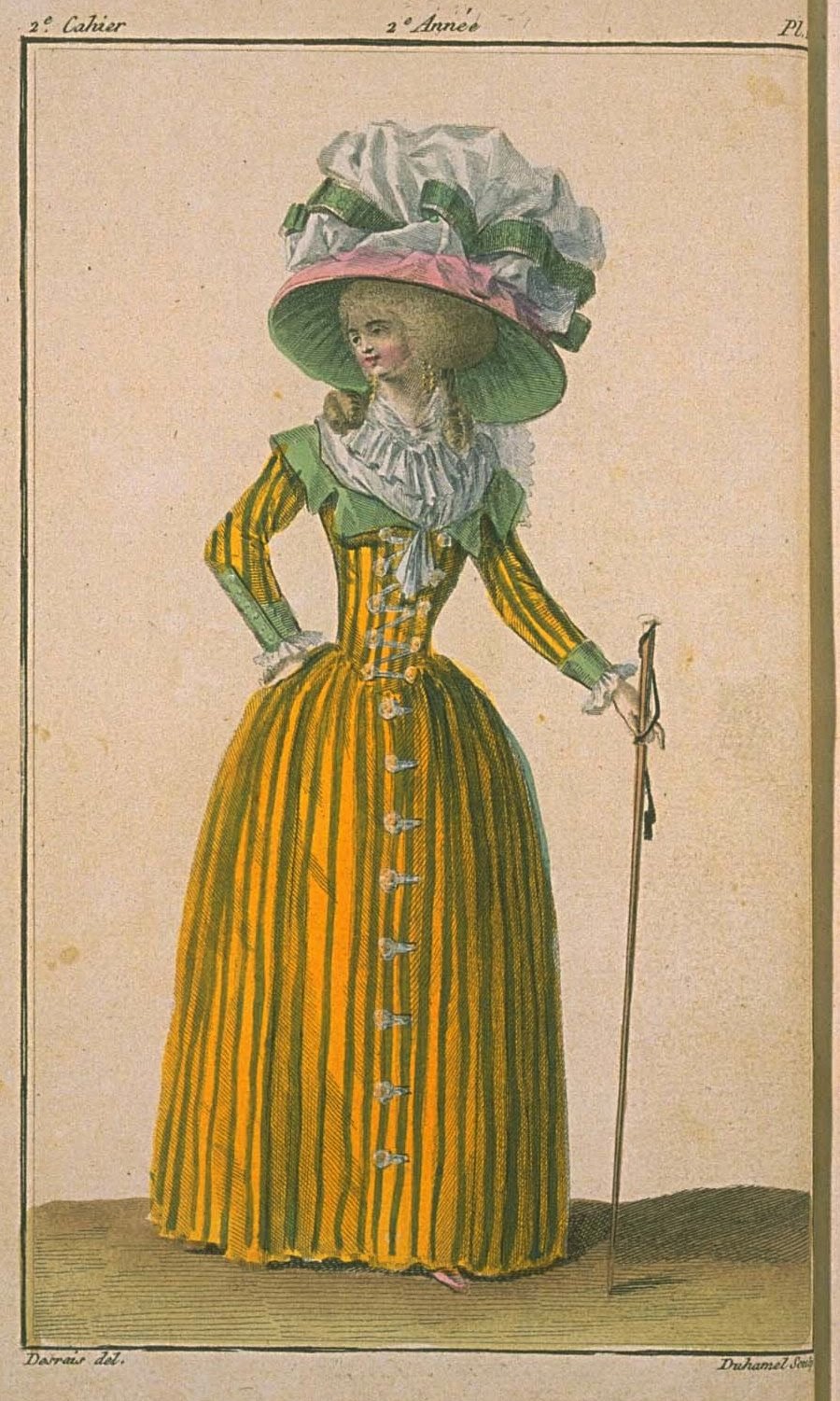Magasin des Modes, 2e Cahier, Plate I
 |
| November 30, 1786 |
The Woman who wears this redingote has her neck covered with a full gauze kerchief with two rows of ruffles, the two ends of which are tied in front as a cravat, near the bodice of the redingote, and descend like a jabot over it.
On her head is a chapeau-bonnette, lined with green satin in the brim, covered with a pink satin on the same brim, and whose crown is of white gauze, very puffed, and belted with a very wide green ribbon with white selvages.
She wears on her feet shoes of pink satin, flounced with a black silk ribbon.
In her hand is a light cane.
In her ears are gold earrings à la Plaquette.
Her wrists are trimmed with pinked gauze ruffles.
Her hair is frizzed en tapet to the middle, and, from the middle to the ends, in large curls, two of which fall on her chest. Behind, her hair is pulled up in a flat chignon.
You can see, without our having to say it, that neither pelisses nor mantelets are worn with redingotes. Our eternal silence in all the descriptions we have given of women dressed in redingotes is one proof that they are never worn. Pelisses and mantelets seem unknown to Englishwomen, from whom our Ladies have taken the fashion of redingotes.
Some Ladies have already begun to attach piping or narrow ribbons to their redingotes. Will they last longer than those on men's coats? Time will tell.



Her tiny, little Beetlejuice head!
ReplyDelete